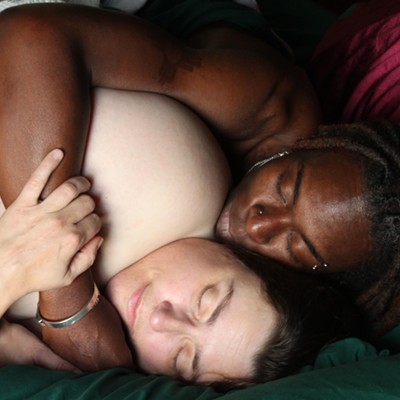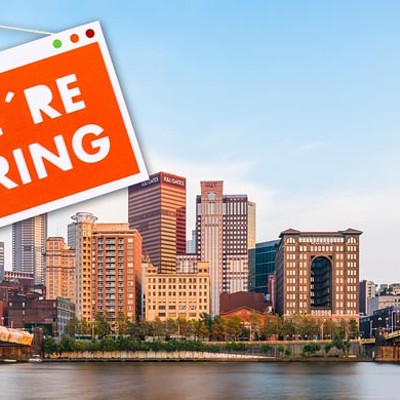The first question PennDOT spokesperson Dick Skrinjar had when asked this question was: "What did this jogger look like? The giant marshmallow guy from Ghostbusters?"
I should note right off that Skrinjar is the bad boy of PennDOT. Ask him how the construction season is going, and he says: "You know, it's really all about the people. If you do a project and there's not a lot of traffic backed up behind it, it just isn't the same." A road construction project is "like a concert in that way."
Skrinjar assures all local drivers -- and joggers, for that matter -- that "We close any bridge that isn't safe." He admits it looks like hell, that it "looks like it's been run hard and put up wet," as he puts it. (This is a reference to horse racing, apparently. Or so Skrinjar said, and to be honest I wasn't anxious to press him on the point.) Yes, one of its sidewalks has been closed, and, yes, the road surface might intimidate an Andean mountain goat. But as Skrinjar puts it, "Just because it looks ratty and shaking doesn't mean there's an imminent danger of it collapsing."
OK, maybe that's not the most reassuring thing a public official has ever said. Especially since the bridge, once scheduled for rehab a year ago, won't likely see work until 2005, and that's assuming there aren't any obstacles or delays. But PennDOT has been stepping up inspections of the bridge -- the most recent was conducted in May -- and inspectors have deemed it safe enough not to put a weight limit on it. Trucks serving the Heinz plant and other industrial concerns use it without fear, though they may add to the consternation of other drivers. "Aesthetically and in terms of providing a smooth commute we could be doing a lot better," Skrinjar acknowledges. "But industrially it functions rather well." The bridge's deck -- the part you drive on -- is shot, but the important part of a bridge is what you can't see, the steel superstructure below. "The number-one thing a structure has to do is hold up its own dead weight," says Skrinjar. (Ordinarily, I'd use this quote to make a joke at the expense of the PennDOT bureaucracy, but those guys have the power to make your life miserable.)
The 31st Street Bridge was built in 1928, and despite being nearly 2,700 feet long -- longer than its neighboring spans -- it's been disrespected ever since. It barely rates a mention in Walter Kidneys' Pittsburgh's Bridges: Architecture and Engineering: While the flanking 40th and 16th street bridges get pages of photos and text, Kidney mentions the 31st street in two sentences, noting that it is "unadorned and never greatly noticed."
"It is the last bridge on the Allegheny that needs a rehabilitation," Skrinjar admits. "We've marched up and down the Allegheny in the last 20 years, from Tarentum to Fort Duquesne." Why has it taken so long to get the 31st Street Bridge repaired? Skrinjar notes that the bridge feeds directly into Route 28, a much larger and more involved project with a timetable of its own. Besides, "Drivers have the 40th and 16th Street Bridge as alternatives. The traffic volumes on 31st Street aren't as great, though it's small consolation to the people who use it."
Not surprisingly, Skrinjar suggests that "if the experience of being on the 31st Street Bridge bothers you, I'd suggest taking the 16th or the 40th street bridges. Because that shaking isn't going away until we work on it."
What about those trapped on the span? Are there any relaxation techniques Skrinjar could recommend to calm them? "Off the top of my head, maybe the Serenity Prayer would work: 'God, grant me the courage to change the things I can change, the serenity to accept the things I can't change, and the wisdom to know the difference.' You're going to want to focus on asking for serenity and wisdom, mostly. Two out of three ain't bad, especially on this bridge."










